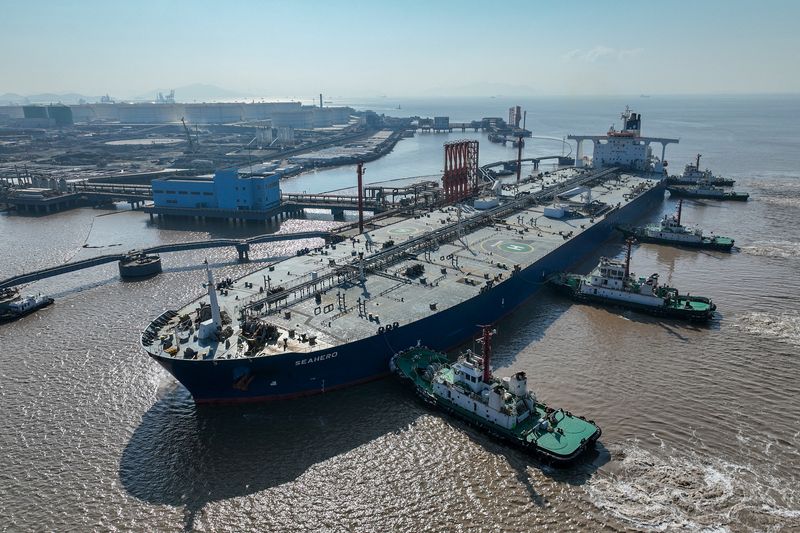Who is Kevin Hassett? Wolfe looks at the Trump ally tipped to become Fed Chair.
By Scott DiSavino
NEW YORK (Reuters) -Crude prices edged up about 1% on Monday with U.S. futures closing at a five-month high, on expectations that economic growth in the U.S. and China will boost demand, while supplies tighten on OPEC+ output cuts and attacks on Russian refineries.
Brent futures for June delivery settled at $87.42 a barrel on Monday, June's first day as the front month. That was up about 42 cents, or 0.5%, from the April 28 settlement price for the June contract. April 29 was the Good Friday holiday.
On April 28, the May Brent contract settled at a five-month high of $87.48 a barrel.
U.S. West Texas Intermediate (WTI) crude futures gained 54 cents, or 0.7%, to settle at $83.71, their highest close since Oct. 27.
The U.S. diesel crack spread, which measures refining profit margins, narrowed to its lowest since May 2023 for a second day.
In the U.S., manufacturing grew in March for the first time in 1-1/2 years, but employment at factories remained subdued amid "sizable layoff activity" and prices for inputs rose.
"Markets interpreted that (manufacturing data) as reducing the chances of meaningful Fed (U.S. Federal Reserve) rate cuts, but construction was much weaker and there are a lot of jobs numbers still to come," analysts at ING, a bank, said in a note.
Last week, U.S. Commerce Department data showed the personal consumption expenditures (PCE) price index - the Fed's preferred inflation gauge - largely moderated in February, with the cost of services outside housing and energy slowing significantly.
Most analysts said the moderation in the PCE price index should keep a June Fed rate cut on the table, which could boost economic growth and increase oil demand.
In China, manufacturing activity in March expanded for the first time in six months, according to an official factory survey. China is the world's largest crude importer.
"Chinese oil demand is arguably the one missing factor outside of geopolitical headlines capable of taking oil prices to the next level," Bob Yawger, director of energy futures at Mizuho, said in a note.
"Strong summer gasoline demand and a rebound in China oil demand could be the one-two punch that support $100 a barrel," Yawger added.
In Japan, optimism in the services sector climbed to a 33-year high in the first quarter on booming tourism and rising profits from price hikes, a central bank survey showed.
In Europe, oil demand was firmer than expected, rising 100,000 barrels per day (bpd) on the year in February, Goldman Sachs analysts said, versus a forecast for a 200,000-bpd contraction in 2024.
On the supply side, top oil exporter Saudi Arabia may raise the official selling price (OSP) in May for flagship Arab Light crude after Middle East benchmarks strengthened last month, according to industry sources.
Russian Deputy Prime Minister Alexander Novak said the country's oil companies will focus on reducing output rather than exports in the second quarter to evenly spread production cuts with other members of OPEC+, the Organization of the Petroleum Exporting Countries (OPEC) and allied producers.
Drone attacks from Ukraine have knocked out several Russian refineries, which should reduce Russia's fuel exports as almost 1 million bpd of Russian crude processing capacity is offline.
